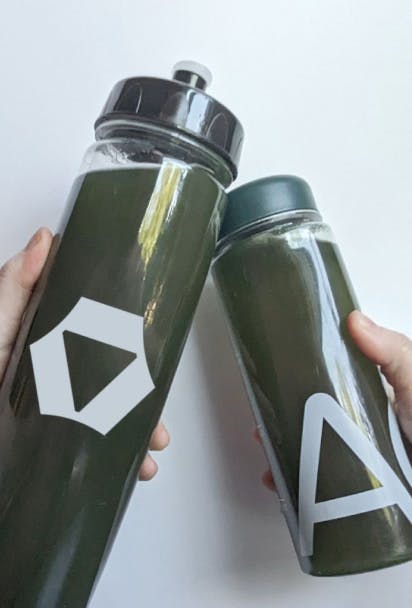E-commerce is never static, but some changes are more impactful than others. The recent end of the U.S. de minimis exemption for international brands is one of them. For years, this "unicorn" of an exemption, as Justin Irvine from The Aggregate Co. referred to it, allowed brands from around the world to send products to an eager U.S. consumer base without paying duties. It was an incredible opportunity, but it also created an environment where brands could succeed without a mature, global strategy.
As of August 29th, that free pass is gone. The uncertainty is palpable, and for many international brands, the initial reaction is panic. It's a "what is happening?" moment that makes you want to put your head in your hands. But while the world may have flipped somewhat upside down, a select few brands are choosing a different path, and that’s one of optimism, resilience, and transformation.
During a recent webinar, I had the opportunity to dive into this topic with two industry leaders who are navigating these exact challenges: Kelly Hunt, the Head of Operations at the high-growth Australian brand BabyBoo Fashion, and Justin Irvine, a global e-commerce expert at The Aggregate Co. What emerged from our conversation wasn't a story of fear, but a clear roadmap for success. The brands that will not only survive but thrive are those that take this moment to finally embrace a new level of operational maturity.
Beyond the De Minimis Rule: Embracing Operational Maturity
For a long time, the de minimis exemption allowed international brands to get away with a lot. They could grow quickly without getting the "boring stuff" right. Justin puts it perfectly, “The businesses that are thriving right now are the ones that have already invested, like BabyBoo, in great people in core areas.” He adds, “You know, facets around mainly production, demand planning, inventory control, all the real boring stuff that makes a business tick.”
The end of de minimis is a major catalyst. In fact, roughly $60 to $70 billion worth of commerce utilized this exemption in 2024. This isn't a minor policy change, but a fundamental shift in how brands operate. Without tight internal processes, the complexities of a new market will overwhelm you. This means knowing your product forecasts inside and out and having the capital and systems in place to manage split purchase orders (POs) and international inventory. It's not a 50/50 split, but a decision based on what's selling where, which requires deep technical expertise. A simple mistake here can lead to a huge cash sink.
The shift in regulations, including tariffs, requires a new level of sophistication. As Justin and Kelly pointed out, investing in proper HTS (Harmonized Tariff Schedule) management is a necessity to minimize your tariff exposure. This level of discipline separates the temporary successes from the long-term, global leaders.
The 'Boring Stuff' That Is Now Critical
The unglamorous back-end of the business, which is the stuff that happens long before a customer clicks buy, is now more important than ever. The experts in our webinar emphasized several areas that can no longer be ignored:
Financial & Tax Compliance: When you move inventory to the US, you establish a "physical nexus" that exposes you to sales tax. You'll need a good tax advisor and a strong understanding of things like your continuous bond. This is a "boring but super, super crucial" element, as Justin noted.
Capital and Cash Flow: This move requires capital, and brands need to be prepared. This isn't just about the cost of moving inventory, but also having the financial runway to get set up and start shipping from a new region.
Origin Warehousing: For brands looking to expand into multiple geographies, holding freight in origin warehouses becomes critical. This allows you to manage inventory across markets and "follow the bouncing ball" of consumer demand.
These are the foundational elements that enable a flexible, scalable operation. Getting them right is non-negotiable for success.
The Right Partner Changes Everything
For many brands, the knee-jerk reaction to this uncertainty is to rush and find a new partner. But as we learned from Kelly, taking a moment to understand what you need is critical. Her team at BabyBoo Fashion had just completed an overhaul of their Australian fulfillment operations before these changes hit. This process, though daunting, gave them a blueprint. They had already "shaken off the fear factor" of moving to a 3PL and knew exactly what they wanted in a partner.
The speed with which they had to pivot was remarkable. In just six months, they went from an internal warehouse to an Australian 3PL and then to a new fulfillment solution in the US. This timeline highlights that having the right processes and an aligned partner is essential for agility. As Justin put it, this kind of move can be "terrifying," but having the right framework makes all the difference. They didn't rush. Instead, they built a thorough RFP with a detailed scorecard, scoring potential partners on everything from data visibility and communication to cultural alignment. The result was a clear winner and a confident decision.
This echoed Justin's advice that you shouldn't just choose the cheapest option. Your fulfillment provider is an extension of your business; you need a partner whose DNA aligns with your own. This partnership is a relationship, and if you aren't aligned, it's a recipe for disaster.
Delivering on the Promise: Localize the Experience
Customers don't care about your internal challenges. They don't know about de minimis, tariffs, or the hurdles you've had to overcome. What they care about is the end-to-end experience. For BabyBoo Fashion, which sells special occasion dresses, on-time delivery is the entire brand promise. As Kelly explained, they are a brand customers turn to for milestone moments in their lives, and they’ll have “ruined her look for her day" if a package is late. That's a burden all brands have to take seriously.
Justin called it "localization on steroids." Simply entering a new market isn't enough. You also have to beat the local competition on service. This means providing fast, affordable, and transparent shipping, offering seamless returns, and adapting your digital engagement to meet local expectations. With the right systems in place, brands can now offer next-day delivery, something that was unheard of when shipping from Australia. This is a critical advantage, especially since only 14% of Australian brands currently offer free returns, which reveals a major opportunity to stand out in the US market.
This is the upside of all this uncertainty. By investing in the right operational framework and the right partners, brands can leverage these challenges to create a superior consumer experience, earn trust, and drive repeat conversions.
The Next Chapter of E-commerce
The e-commerce world has officially grown up. The brands that will continue to win are those that see these changes not as a catastrophe, but as an opportunity to build a more resilient and consumer-centric business. It's a fluid global geopolitical scenario right now, and as Justin quipped, sometimes it feels like we "wake up each morning and shake the Trump eight ball to see what's going to happen today."
But there is a way forward. As Justin advises, we need to "follow the bouncing ball" and remember that "there is a road map." It's time to take the bull by the horns and move forward with the right framework, the right partners, and a little bit of optimism.
To learn more about how your brand can navigate these changes, read our complete guide on the end of de minimis.







